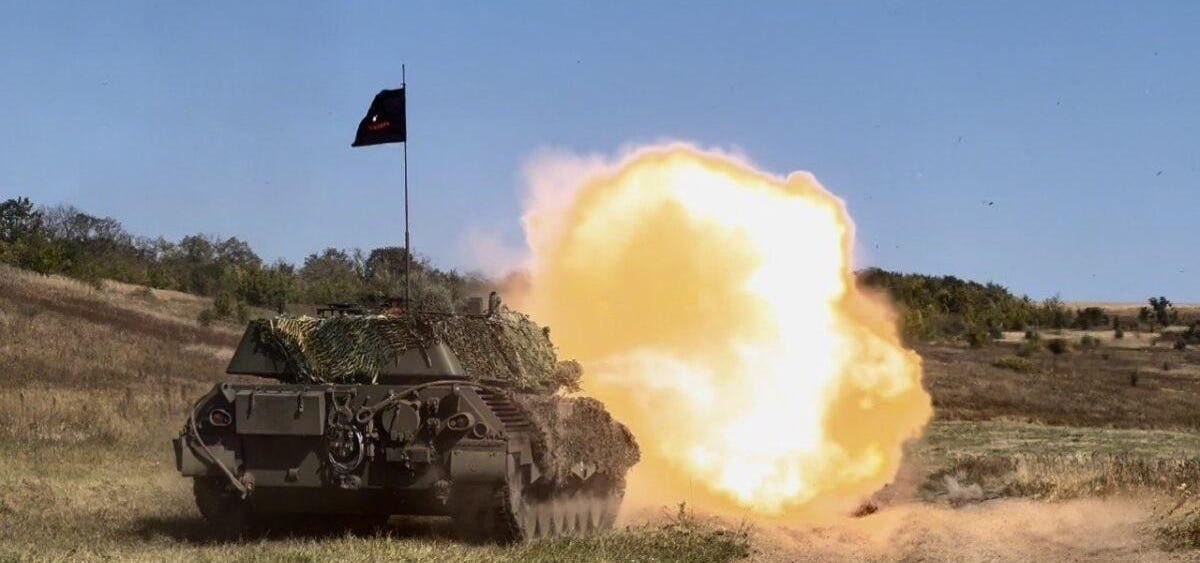Twenty-one months into Russia’s wider war on Ukraine, Kyiv’s brigades have received dozens of tanks with the classic L7 105-millimeter gun made by Royal Ordnance in the United Kingdom.
But we still don’t know what kind of ammunition Ukraine’s M-55S and Leopard 1A5 tanks fire from their L7s. And it matters. A lot. Especially as scores more Leopard 1s arrive in the coming months.
It’s clear what ammunition tankers with the L7-armed brigades—the 44th and 67th Mechanized, apparently—would want. For defeating Russian tanks, crews would prefer either German DM63 or American M900 armor-piercing fin-stabilized discarding-sabot rounds.
The rounds are 25-millimeter tungsten or depleted-uranium darts nestled in a shoe. The shoe pops off after the 40-pound shell leaves the barrel, and the penetrator lances toward its target at 1,500 yards per second.
The tungsten DM63, which is a licensed copy of an Israeli round, and the uranium M900 both can penetrate the equivalent of 600 millimeters of steel armor from thousands of yards away. That’s enough penetrative power to poke a hole in the turret of a Russian T-72 tank, even a newish T-72B3M.
To understand how devastating a German or American sabot round can be to a Russian tank, look at what an inferior Russian sabot round—fired by a Ukrainian T-80BVM—did to Russian T-72B3M outside Kharkiv late last year. Censor.net posted a description of the engagement, including graphic photos.
The T-80’s 3BM42 round, which is shorter and softer than a NATO sabot round is and thus has much less penetrative power—half or a third, depending on the source—struck the T-72 on the front left of the turret.
The penetrator made a neat hole in the layers of armor, nipped the gunner in the head, killing him, and wounded the tank’s commander so badly that he later bled to death. Only the T-72’s driver survived.
The Ukrainian tank reportedly was more than 3,000 yards away when it engaged the Russian tank. That a 3BM42 sabot round—a middling munition—could kill a T-72B3M with a nearly frontal turret shot from that distance speaks to the fragility of the T-72’s protection in certain conditions. But it also underscores the destructive potential of even the worst sabot rounds.
All that is to say, if the Ukrainians got DM63s—perhaps via Slovenia, where the M-55S tanks came from—or M900s, which may have been included in an American aid package from April, then Ukraine’s growing fleet of L7-armed tanks could pose a serious threat to Russia’s own tanks.
Read the full article here





